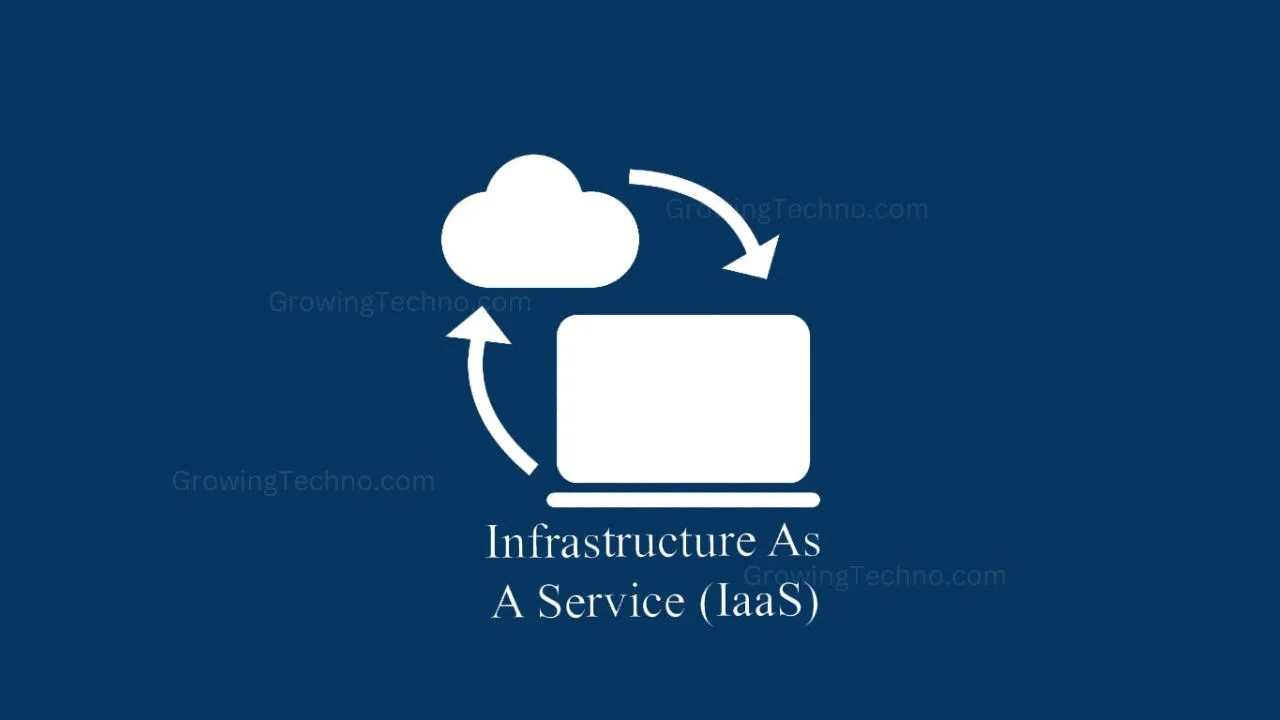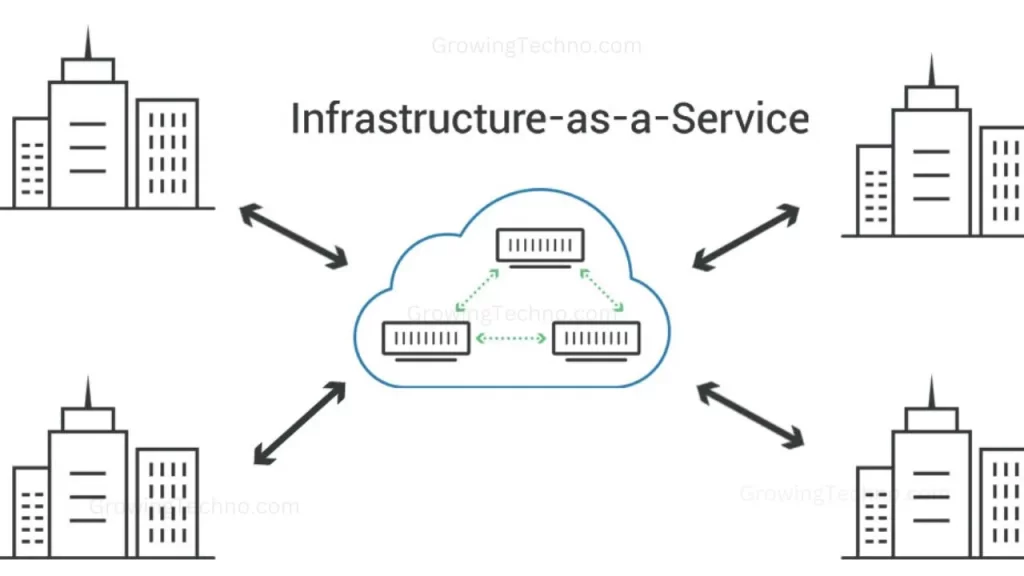
In today’s fast-paced digital landscape, businesses are constantly seeking innovative ways to manage their IT infrastructure more efficiently. Infrastructure as a Service (IaaS) has emerged as a game-changing solution, revolutionizing the way organizations handle their IT needs. In this comprehensive guide, we’ll take a deep dive into IaaS, breaking down complex concepts into straightforward, easy-to-understand terms. Whether you’re an IT expert or a newcomer to the tech world, this article will provide you with a clear understanding of what IaaS is, how it works, its benefits, and its significant role in modern business.
Understanding the Basics: What Is IaaS?
At its core, Infrastructure as a Service (IaaS) is a cloud computing model that delivers essential IT infrastructure components over the Internet. These components encompass virtualized computing resources, storage, and networking capabilities. Instead of investing in and managing physical hardware and data centers, businesses can leverage IaaS providers to access and utilize these resources on demand.

The Mechanics of IaaS:
IaaS operates on a straightforward principle: resource virtualization. Let’s explore the key components that power IaaS:
1. Virtualization:
Virtualization serves as the backbone of IaaS. It involves creating virtual instances of computing resources, such as virtual machines (VMs) and virtual storage, abstracted from physical hardware. This virtualization layer allows for flexibility and scalability, as multiple virtual instances can run on a single physical server.
2. On-Demand Resources:
With IaaS, businesses gain the power to provision and manage resources as needed. Whether it’s additional server capacity, storage space, or network bandwidth, users can scale up or down based on their requirements. This flexibility eliminates the need for upfront capital investments.
3. User-Friendly Interfaces:
IaaS providers typically offer intuitive user interfaces or portals, enabling clients to seamlessly manage and monitor their virtual infrastructure. This self-service aspect empowers organizations to have more control over their IT resources.
4. Pay-as-You-Go Pricing:
IaaS adopts a pay-as-you-go pricing model, ensuring that businesses only pay for the resources they consume. This cost-effective approach eliminates unnecessary expenditures on idle infrastructure.
The Advantages of Embracing IaaS:
Now that we’ve delved into the core concepts of Infrastructure as a Service (IaaS), it’s time to explore the myriad advantages of incorporating IaaS into your organization’s strategic framework. Let’s take a closer look at these compelling benefits:
1. Cost Efficiency:
Embracing IaaS marks a departure from the world of physical hardware, which often entails substantial capital expenses. IaaS introduces a transformative pay-as-you-go pricing model. This innovative approach allows businesses to streamline their IT budgets with unparalleled efficiency. Instead of hefty upfront investments, organizations can allocate resources precisely as needed, aligning IT expenditure with operational requirements. This cost-effective strategy not only conserves financial resources but also promotes fiscal agility.
2. Scalability:
One of the defining features of IaaS is its innate scalability. In a rapidly evolving business landscape, the ability to adjust resources on the fly is invaluable. Whether your organization is experiencing a surge in demand, embarking on expansion, or needs to downsize temporarily, IaaS offers seamless scalability. This means you can effortlessly expand or contract your IT infrastructure without causing disruptions. It’s a dynamic approach that ensures your technology resources are always aligned with your evolving business needs.
3. Flexibility:
IaaS isn’t just about infrastructure; it’s a catalyst for innovation. Businesses are constantly exploring new technologies and seeking opportunities for differentiation. IaaS’s inherent flexibility empowers organizations to be at the forefront of innovation. It allows for rapid experimentation with emerging technologies and the swift deployment of applications. This adaptability gives businesses a competitive edge, enabling them to respond promptly to market trends and customer demands. In essence, IaaS turns your IT infrastructure into a dynamic playground for innovation.
4. Disaster Recovery:
Data is the lifeblood of modern enterprises, making its protection paramount. Many IaaS providers offer robust data backup and disaster recovery solutions as part of their service offerings. With IaaS, your critical data is securely stored in off-site locations, insulated from potential disasters that could disrupt your operations. These comprehensive disaster recovery mechanisms minimize the risk of data loss, ensuring business continuity even in the face of unforeseen challenges. It’s a layer of security that provides peace of mind in today’s unpredictable business landscape.
5. Accessibility:
In a globally connected world, accessibility is key to business success. IaaS resources are not bound by physical constraints; they are accessible from anywhere with an internet connection. This inherent accessibility transcends geographical boundaries, facilitating remote work, seamless collaboration among teams located in different regions, and global access to your IT infrastructure. Whether you have a distributed workforce or international clientele, IaaS empowers you to maintain a connected and productive ecosystem.
In summary, the advantages of embracing IaaS extend far beyond traditional IT infrastructure management. It’s a strategic shift that unlocks cost efficiency, scalability, flexibility, robust disaster recovery, and unprecedented accessibility. By harnessing the potential of IaaS, organizations can not only optimize their operations but also embark on a journey of innovation, staying resilient and competitive in a dynamic business landscape.
Common Applications of IaaS:
IaaS finds applications across various industries and scenarios:
1. Development and Testing Environments:
IaaS offers a haven for software developers and testers. It liberates them from the constraints of physical infrastructure, allowing them to create, modify, and rigorously test applications in a dynamic and resource-rich virtual environment. This flexibility accelerates the development cycle, fostering innovation and efficient code deployment.
2. Web Hosting:
For websites and web applications hungry for reliability and performance, IaaS is a preferred choice. Hosting on IaaS platforms ensures high availability, scalability, and the ability to handle traffic spikes gracefully. Businesses can rest assured that their online presence remains robust, even during peak usage periods.
3. Big Data and Analytics:
The data-driven revolution relies on the computational muscle and storage capacity of IaaS. Handling massive datasets and conducting intricate data analytics require substantial computing power. IaaS readily steps in, offering the resources needed to crunch numbers, derive insights and make data-driven decisions that drive businesses forward.

4. Backup and Recovery:
Safeguarding critical data is paramount, and IaaS plays a pivotal role in ensuring robust backup and recovery strategies. Organizations entrust their data to IaaS providers, benefiting from secure, off-site data storage. This proactive approach mitigates the risks associated with data loss, enhancing business continuity and disaster recovery capabilities.
5. Virtual Desktop Infrastructure (VDI):
The rise of remote work and the need for efficient desktop resource management have ushered in the era of Virtual Desktop Infrastructure (VDI), where IaaS shines. It empowers organizations to create and manage virtual desktop environments, accessible from anywhere with an internet connection. This not only facilitates remote work but also streamlines desktop resource allocation and management, optimizing IT infrastructure.
Key IaaS Providers:
Several prominent cloud service providers offer IaaS solutions, including:
1. Amazon Web Services (AWS):
Amazon Web Services, often referred to as AWS, commands a leading position in the IaaS landscape. AWS offers a rich tapestry of IaaS services designed to empower businesses in their digital journey. Among its flagship offerings are Amazon Elastic Compute Cloud (EC2) for scalable computing resources and Amazon Simple Storage Service (S3) for secure and scalable storage solutions. With AWS, organizations gain access to a vast ecosystem of cloud services that cater to a myriad of IT needs.
2. Microsoft Azure:
Microsoft Azure is another heavyweight in the IaaS arena, renowned for its seamless integration with Microsoft’s extensive software ecosystem. Azure’s IaaS portfolio encompasses a wide spectrum of services, including virtual machines, networking solutions, and robust storage options. This versatility makes Azure a go-to choice for businesses seeking a holistic cloud platform that can accommodate diverse workloads while facilitating integration with existing Microsoft technologies.
3. Google Cloud Platform (GCP):
Google Cloud Platform, often abbreviated as GCP, has emerged as a formidable player in the IaaS domain. GCP’s IaaS foundation is anchored by services like Google Compute Engine, which provides highly customizable virtual machines for computing needs. Additionally, Google Cloud Storage offers scalable and resilient data storage solutions. GCP’s focus on data analytics and machine learning further enhances its appeal, making it an ideal choice for organizations with advanced data-driven requirements.
4. IBM Cloud:
IBM Cloud caters to the specific demands of enterprises with tailored IaaS solutions. At its core, IBM Cloud offers virtual servers that can be provisioned to match varying workloads, ensuring flexibility and cost-effectiveness. The platform also features scalable storage options to accommodate growing data needs. IBM’s deep-rooted presence in enterprise IT positions its IaaS services as a reliable choice for businesses seeking trusted and scalable cloud infrastructure.
The Future of IaaS:
As technology advances, IaaS is poised to play an even more pivotal role in shaping the digital landscape. With the emergence of edge computing, artificial intelligence, and 5G networks, IaaS will provide the infrastructure required to support these groundbreaking innovations.
In conclusion, Infrastructure as a Service (IaaS) represents a paradigm shift in IT infrastructure management. By offering scalability, cost-efficiency, and flexibility, IaaS empowers businesses to adapt, innovate, and thrive in our increasingly digital world. Whether you’re a startup aiming to scale rapidly or an established enterprise seeking operational efficiency, IaaS stands as a cornerstone of modern business success.
Are you prepared to embrace the future of IT infrastructure? Dive into the world of IaaS and unlock boundless possibilities for your organization.
The Expanding Horizons of IaaS:
With the increasing reliance on cloud computing and the constant evolution of technology, the world of Infrastructure as a Service (IaaS) continues to expand. As we delve deeper into the realm of IaaS, let’s explore some additional facets of this transformative technology:
1. Security Enhancements:
IaaS providers prioritize security measures to protect data and infrastructure. Features like encryption, identity and access management, and threat detection are integrated to ensure robust security.
2. Regulatory Compliance:
IaaS platforms adhere to industry-specific compliance standards, making them suitable for businesses subject to regulatory requirements, such as healthcare (HIPAA) and finance (PCI DSS).
3. Hybrid Cloud Solutions:
Many organizations opt for a hybrid cloud approach, combining on-premises infrastructure with IaaS. This hybrid model offers flexibility and facilitates the gradual transition to the cloud.
4. Edge Computing Integration:
With the rise of edge computing, IaaS providers are extending their services to the edge. This enables low-latency processing for applications like IoT and real-time analytics.
5. AI and Machine Learning Support:
IaaS platforms increasingly offer AI and machine learning capabilities, empowering businesses to harness the potential of advanced analytics and automation.
As we move forward, IaaS will continue to evolve, adapt, and shape the future of IT infrastructure. Stay tuned for more exciting developments in this dynamic field.
Navigating the IaaS Landscape:
As businesses explore the vast landscape of Infrastructure as a Service (IaaS), they often encounter various considerations and challenges. Let’s address some common queries and guidance on effectively navigating the IaaS landscape:
1. Choosing the Right Provider:
Selecting the ideal IaaS provider is akin to choosing the foundation for your digital infrastructure. It is imperative to meticulously assess various factors to ensure alignment with your organization’s specific requirements. These factors encompass a provider’s service offerings, pricing structures, and regional availability. A thorough evaluation will help you make an informed decision that harmonizes with your business goals.
2. Data Migration Strategies:
The migration of existing data and applications to an IaaS environment is a pivotal phase in adopting cloud infrastructure. However, this process demands meticulous planning and a well-defined strategy. Organizations must carefully contemplate the most suitable migration approach, be it rehosting, refactoring, or rearchitecting. Each strategy carries its own set of advantages and considerations, and selecting the right one is essential to a smooth transition.
3. Cost Optimization:
While IaaS is renowned for its potential to reduce operational costs, optimizing resource usage is an ongoing endeavor. To ensure that you are harnessing the full cost-saving potential, it is crucial to implement rigorous cost monitoring and management practices. This involves regularly assessing resource utilization, rightsizing instances, and leveraging auto-scaling capabilities to avoid incurring unnecessary expenses.
4. Security Best Practices:
Security is paramount in the cloud environment, and maintaining robust defenses is non-negotiable. Adhering to industry best practices is fundamental to safeguarding your digital assets. This encompasses implementing comprehensive identity management protocols, robust data encryption mechanisms, and conducting routine security assessments and audits. By fortifying your security measures, you can instill trust and confidence in your cloud infrastructure.
5. Compliance and Governance:
Businesses operating within regulated industries or those with stringent internal governance policies must ensure that their IaaS deployment aligns with relevant regulations and internal compliance mandates. This entails the implementation of rigorous auditing and compliance monitoring processes. By adhering to these measures, organizations can demonstrate their commitment to regulatory compliance and governance standards, mitigating potential risks and ensuring accountability.
The Ever-Evolving IaaS Ecosystem:
In an era defined by digital transformation, Infrastructure as a Service (IaaS) remains at the forefront of technological innovation. The IaaS ecosystem continues to evolve, providing businesses with dynamic solutions to meet their IT infrastructure demands.
As we conclude this exploration of IaaS, remember that embracing this transformative technology can empower your organization to thrive in the digital age. Whether you’re embarking on a cloud migration journey, enhancing your existing infrastructure, or venturing into new realms of innovation, IaaS offers a world of possibilities.
Prepare your business for the future – unlock the potential of Infrastructure as a Service today.














